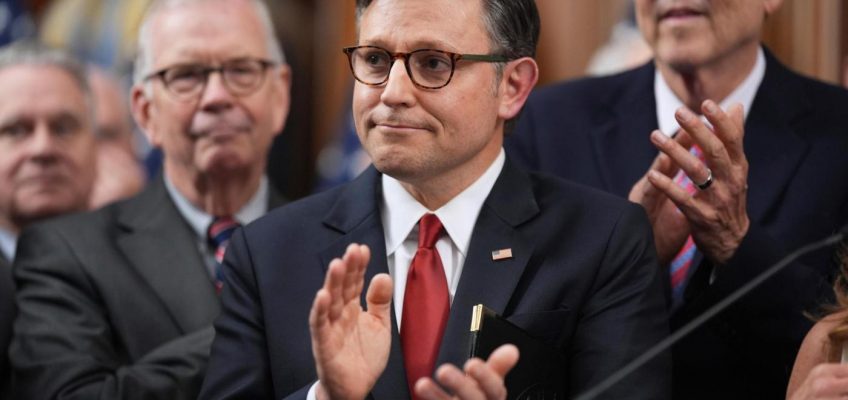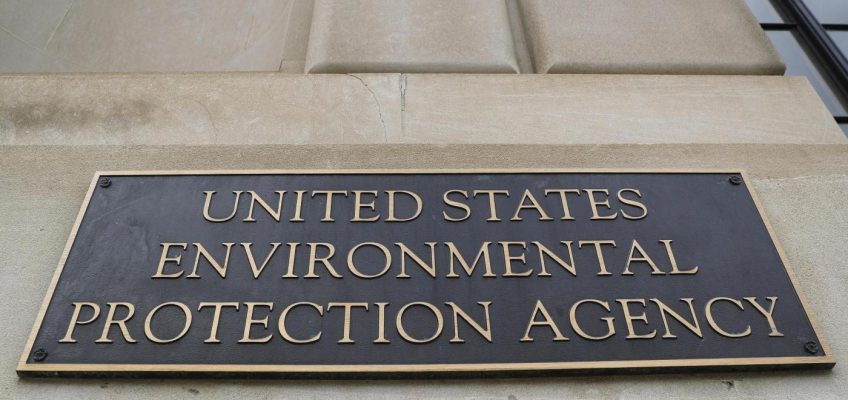By ALEXA ST. JOHN
Congress passed a massive tax and spending cuts package Thursday that curbs billions of dollars in spending across clean energy. That means people will be paying a lot more for home solar, energy efficiency and other green technologies — and the nation’s efforts to address climate change just got a lot more challenging.
The bill that awaits President Donald Trump’s signature supports mining, drilling and production of the oil, coal and gas that are largely driving Earth’s warming and the increasingly deadly and costly extreme weather that comes with it. Producing and burning these fossil fuels also contributes to air pollution and human health problems.
At the same time, the bill slashes tax credits for clean technologies including wind and solar energy. That will likely mean delay or cancellation of countless projects, affecting thousands of jobs and driving up household energy costs.
Here are four things to know about what the bill means for clean energy:
FILE – Theodore Tanczuk, left, and Brayan Santos, right, of solar installer YellowLite, put panels on the roof of a home in Lakewood, Ohio, April 16, 2025. (AP Photo/Sue Ogrocki, File)
Cuts to home energy credits will make updates more costly
The climate law passed during former President Joe Biden’s term included tax credits for systems and projects at home — like solar and batteries — that save homeowners money over time and significantly cut greenhouse gas emissions.
These systems have gotten cheaper over the years but they’re still hefty upfront expenses that some homeowners would struggle to absorb without the credits. An average rooftop solar installation can run $20,000 or more; the credit has covered almost one-third of that. An average heat pump typically costs several thousand dollars; the tax credit reimbursed up to 30% of the cost, or $2,000.
The U.S. Treasury Department said more than 2 million families claimed more than $2 billion of the credit for upgrades such as windows, insulation, heating and cooling systems in tax year 2023 returns. More than 1.2 million families claimed more than $6 billion in the credit for solar installations, solar water heating, geothermal heat pumps and battery storage and other improvements that same year.
The bill ends both tax credits at the end of this year.
“No one asked Congress to make their energy bills even higher,” said Steven Nadel, executive director of the American Council for an Energy-Efficient Economy, a nonprofit that advocates for cutting energy waste. “Taking away incentives for energy-saving improvements would raise monthly bills for families and businesses.”
But Republican lawmakers hailed the measure. Republican Sen. Mike Crapo of Idaho, the chairman of the Senate Finance Committee, said it helps unleash American energy and will save taxpayers money.
“Extending good tax policy, delivering targeted relief and reining in wasteful spending is the best way to restore economic prosperity and opportunity for all Americans,” he said.
FILE – Electric vehicles charge at an Electrify America station in Arcadia, Calif., May 22, 2025. (AP Photo/Jae C. Hong, File)
Electric vehicle credits disappear
The bill eliminates credits of up to $7,500 for buyers of new electric vehicles and up to $4,000 for buyers of used EVs.
That’s likely to hurt the growth of a technology that is seen as critical to cutting down on a big source of Earth’s warming. Transportation is the largest single source of U.S. greenhouse gas emissions — 28% in 2022, according to the Environmental Protection Agency.
EV sales have grown steadily, making up about 8% of new car sales in the U.S. last year, according to Motorintelligence.com. Biden had set a target for half of all new vehicles sold in the U.S. to be electric by 2030.
But that purchase may be harder for consumers to swallow without a credit. EVs sold for an average of $57,734 in May, while new vehicles overall sold at an average of $48,799, according to Kelley Blue Book.
The credits go away after Sept. 30.
FILE – Wind turbines are visible along Route 176 as vehicles travel eastbound Feb. 24, 2025, in Andrews, Texas. (AP Photo/Julio Cortez, File)
Big wind and solar projects will struggle to qualify for tax credits
For large-scale wind and solar, the bill speeds up the timelines projects must meet to qualify for a tax credit. The industry says it will be nearly impossible for many projects to meet those accelerated timelines, putting massive projects from Colorado to Texas to Arizona at risk.
The bill allows a full tax credit for wind and solar developments that start construction within a year of the law’s enactment. But projects that begin more than a year after the bill’s passage have to be operational by the end of 2027 or they won’t get a credit.
Supreme Court clears way for deportation to South Sudan of several immigrants with no ties there
Takeaways as Congress sends tax and spending cuts bill to Trump’s desk
EPA puts on leave 139 employees who spoke out against policies under Trump
Medicaid, food aid recipients worry about safety net cuts in bill sent to Trump
Watch: Hakeem Jeffries took his ‘sweet time’ holding the floor to delay Trump’s tax bill
Atlas Public Policy, a policy consultancy, said roughly 28 gigawatts of wind and solar projects are planned to be operational after the start of 2028 but haven’t begun construction yet. Under the bill, they’re unlikely to qualify for a credit.
Wind provides about 10% of the electricity generated in the U.S., according to the U.S. Energy Information Administration, with a goal of 20% by 2030. Solar is at about 4%, with the industry’s target at one point to reach 30% by the end of the decade.
Clean energy advocates, developers and investors say wind and solar are crucial for the nation’s renewables ambitions, and tax credits help to make them viable. But Trump has pulled the U.S. out of the Paris agreement, which calls on signatories to try to keep global temperatures from warming 1.5 degrees Celsius (2.7 degrees Fahrenheit) above pre-industrial times.
Instead, the bill supports traditional fossil fuels such as oil, natural gas and coal, as well as nuclear power. Proponents say it will increase reliability since the wind doesn’t always blow and the sun doesn’t always shine.
“Americans need reliable and affordable energy, wasteful spending needs to be cut, and our country needs to be able to build again,” said Sen. Shelley Moore Capito, R-W.Va, applauding the bill.
FILE – An electric vehicle charges at a station May 22, 2025, in Long Beach, Calif. (AP Photo/Damian Dovarganes, File)
Experts say watch out for higher energy prices
But others say Americans can expect to see higher utility bills. That’s unwelcome news at a time when the nation’s growth in data centers, driven by demand for artificial intelligence, are sending energy use higher, and when climate change is fueling more frequent extreme weather.
Nonpartisan and energy groups estimate the bill’s passage could increase average annual electricity costs by more than $100 per household by next year. If fewer solar and wind projects are added to the grid because there is less incentive and it is too expensive for developers to do so without credits, some states could see increases of more than $200.
“At a time when energy demand is surging and families are already struggling to make ends meet, this bill would raise costs, make the grid less reliable, and make the U.S. more dependent on foreign oil,” said Lori Lodes, executive director of climate action advocacy group Climate Power. “It threatens our power supply just as extreme weather and record demand are putting historic strain on the grid, forcing brownouts and blackouts across the country.”
The loss of tax credits might not immediately impact project plans. But increased uncertainty makes it more difficult to invest in innovative new technologies and maintain national security.
Alexa St. John is an Associated Press climate reporter. Follow her on X: @alexa_stjohn. Reach her at ast.john@ap.org.
Read more of AP’s climate coverage at http://www.apnews.com/climate-and-environment
The Associated Press’ climate and environmental coverage receives financial support from multiple private foundations. AP is solely responsible for all content. Find AP’s standards for working with philanthropies, a list of supporters and funded coverage areas at AP.org.




